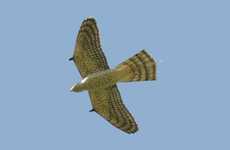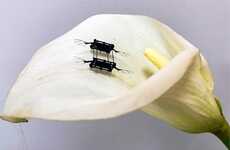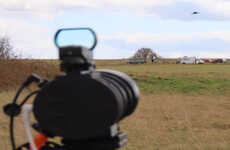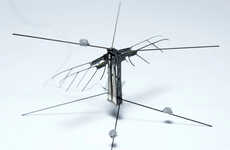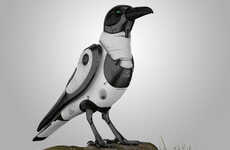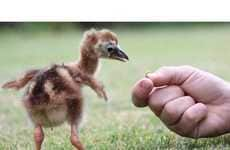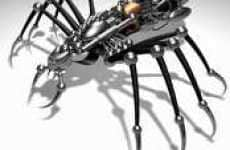
Control the Flight of a Pigeon Using Microelectrodes
References: earthtimes.org
Microelectrodes, planted in the bird's brains, are used by the Chinese scientists to control the flight of the pigeons. The scientists were able to force the birds to fly left and right or up and down by mimicking the natural signals in the pigeon's brains while the electrode signals were controlled through a computer.
Implications - The chief scientist, Su Xuecheng, has declared that it is "the first such successful experiment on a pigeon in the world.†Hopefully, these action-controlling measures won't ever be used on humans. As cool as it seems, animal rights activists will probably be rallying against this. The whole mind control aspect seems like it's a plot straight out of a mad scientist novel.
Implications - The chief scientist, Su Xuecheng, has declared that it is "the first such successful experiment on a pigeon in the world.†Hopefully, these action-controlling measures won't ever be used on humans. As cool as it seems, animal rights activists will probably be rallying against this. The whole mind control aspect seems like it's a plot straight out of a mad scientist novel.
Trend Themes
1. Animal Control with Microelectrodes - Technological advancement in manipulating animal behavior using microelectrodes in the brain.
2. Remote Control with Brain Signals - The fusion of neuroscience and technology to remotely control animal behavior via computer simulation.
3. Ethical Implications of Animal Control - The impact of technological developments in animal control towards animal rights and welfare concerns.
Industry Implications
1. Neuroscience - Brain research and technology development for brain manipulation.
2. Animal Agriculture - Animal behavior control for animal breeding and production.
3. Entertainment - Manipulating animal performances and tricks for entertainment purposes.
3.2
Score
Popularity
Activity
Freshness





